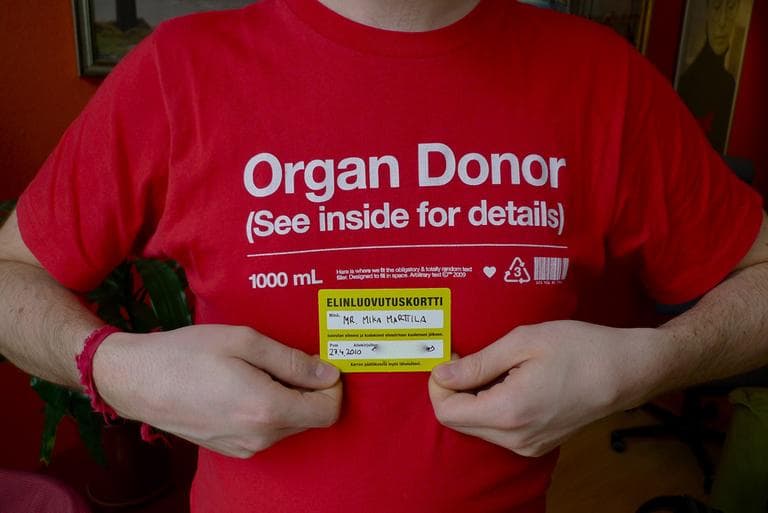Advertisement
A Complex Solution: Organ Donation After Cardiac Death
Resume
As of today, there are 110,296 people waiting for an organ. On average, 18 will not survive the day.
According to a New York Times magazine article by Dr. Darshak Sanghavi, "85 percent of eligible brain-dead patients’ families in central Massachusetts chose to donate in 2008" but because of the rarity of brain death, they were unable to do so.
This, in turn, means transplant doctors and patients were forced to imagine organ donation beyond brain-dead donors. Experts decided to re-think the definition of death.
In 1981, the the Uniform Determination of Death Act defined death as the "irreversible cessation of circulatory and respiratory functions." Then in 1997, the federal government enlisted an independent advisory body called the Institute of Medicine to think more broadly about ways dying donors might be treated. After serious deliberation and extensive discussion, the panel decided on a new procedure: donation after cardiac death. Simply defined, this entails removing a dying patient from life support and allowing a heart to stop causing "irreversible cessation."
We take a closer look at donation after cardiac death: its impact, its complexity, its future.
Guests:
- Kerrie Casey, family member of organ donor
- Dr. Francis Delmonico, medical director, New England Organ Bank; director of educational activities, Transplantation Center at Massachusetts General Hospital
- Dr. Darshak Sanghavi, chief of pediatric cardiology, University of Massachusetts Medical School; Slate health care columnist; author of "A Map of the Child: A Pediatrician’s Tour of the Body"
More:
- Commonhealth: The Emotional Toll of a Race-Against Time Organ Donation
- New York Times Magazine: When Does Death Start? by Dr. Darshak Sanghavi
This segment aired on February 16, 2011.